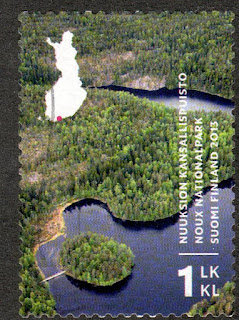INDONESIA.Musical instruments.
Western New Guinea (Irian Barat, now Papua Barat) map and genderang.
Sixth stamp in a set of 16, issued on 01.02.1967.
Face value: 2.50 Indonesian rupiah.
Printing: Photogravure.
Size: 25 x 32 mm.
Catalogs
- Michel No. 567.
- Scott No. 710.
- StampWorld No. 609.
- Stanley Gibbons No. 1145.
- Yvert et Tellier No. 503.
- Zonnebloem No. 568.
Western
New Guinea (Irian Barat, from 1973 Irian Jaya, renamed Papua
Barat in 2002) is the western portion of the island of New Guinea controlled by
Indonesia since 1962. It is considered to be a part of Oceania. Following its
proclamation of independence in 1945, the Republic of Indonesia took over all
the former territories of the Dutch East Indies,
including Western New Guinea. However, the Dutch retained sovereignty over the
region until the New
York Agreement on 15 August 1962, which granted Western New Guinea to
Indonesia. The total area of this province is 415,170.52 km2 (160,298.23 sq
mi), and its population according to the 2020 census was 5,437,775 inhabitants,
the majority of whom are Papuans.
In the north of the province are the Maoke Mountains, with
ten peaks over 4,000 m (13,000 ft), including Puncak Jaya (4,884 m or 16,024
ft), Puncak Mandala (4,760 m or 15,620 ft) and Puncak Trikora (4,750 m or
15,580 ft). The territory, bathed by the Pacific Ocean to the north and the Arafura Sea to the south,
includes forty islands.
The
genderang is a percussion musical instrument.























